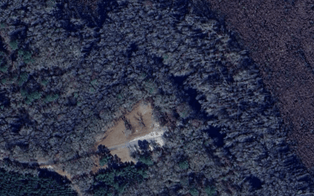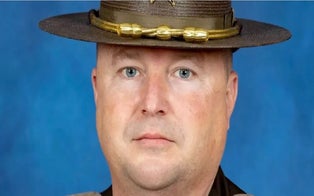Chef Shane Chartrand released "tawâw" as an ode to native cuisine.
This new cookbook is not about new recipes. Instead, it celebrates ancient ingredients and cooking techniques passed down by elders of Native groups all over North America.
Chef Shane Chartrand of Edmonton, Canada, released his cookbook "tawâw" as an ode to indigenous cuisine.
“It’s about touchstones of information,” he told InsideEdition.com.
Chartrand’s roots are in the Enoch Cree Nation, a tribe located near Edmonton, with influence from the Mi’kmaq peoples on his mother’s side and Métis on his father’s side.
But the book is a result of his travels from nation to nation, with the goal of learning about different ways of cooking and sharing the knowledge with indigenous and non-indigenous people alike.
“Are we from a multi-cultural country? Of course we are, we’re from Canada. Why are we not celebrating indigenous food?” he pondered. “It’s terrible that we’re not celebrating indigenous food and that’s not bannock [flat bread], that’s not Indian tacos. We’ve got to go way deeper to understand what that platform looks like.”
Chartrand, the executive chef at the River Cree Resort Casino and finalist on "Chopped Canada," said his favorite foods to work with include wild game and vegetables native to the land.
“Indigenous food is understanding 'terroir,'” Chartrand said, referencing a French word that relates to the environment in which food is produced. “We all eat different foods because we all come from different places. This is bison territory. That’s what our staple is. That doesn’t mean it was everywhere.”
But he wasn’t always so in touch with his indigenous roots. Chartrand was one of 20,000 aboriginal children taken from their families and placed in white households as a part of a policy known as the Sixties Scoop.
Chartrand was just 1 year old when he was put into foster care. He wasn't adopted by a family until he was 6.
“Some people grow up knowing what their food is and their culture — I could never celebrate. I didn’t know nothing about my background. That’s the worst feeling in the world, not knowing where I’m from. That was very painful for me,” Chartrand said. “When I was older and I learned where I was from, it was catch up time.”
As a part of his quest to understand foods from different tribes, Chartrand made a trip to Gingolx, a village near Prince Rupert, British Columbia, to learn from the Nisga’a people as part of an episode on “Red Chef Revival,” a documentary series that spotlights indigenous chefs.
“Indigenous food, it’s always about place, it’s always about land,” he explained. “Now, if you go there, we’re eating seal meat. We cook the whole seal.”
To learn how to make traditional seal meat stew, Chartrand met with an older woman who taught him to butcher, season and prepare the dish.
“When you sit around a dinner table, who do you listen to? Grandma and grandpa, because they’re the ones that have been around the longest and you respect them,” he said. “Elders are the ones that teach us. Like your grandfather, like your grandmother. Like my kokum, like my mushom.”
Anticipating backlash from cooking the controversial meat, Chartrand explained that spreading knowledge about lesser-known indigenous ingredients, like seal meat, is one of the reasons he put together his cook book.
“Imagine me talking about seal meat on my Facebook profile. Imagine the activists that would reach out,” Chartrand said. “It’s sustainable, it’s real, it’s healthy and it’s delicious. And I think seal meat’s cool, I don’t care what anyone says.”
RELATED STORIES





